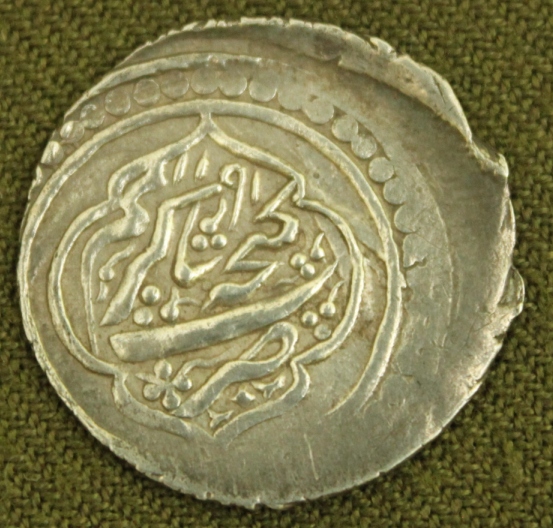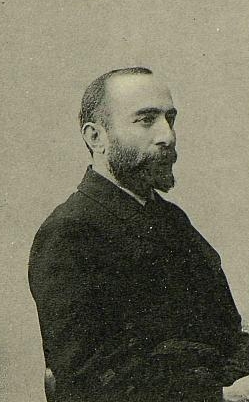|
Gandja
Ganja (; az, Gəncə ) is Azerbaijan's third largest city, with a population of around 335,600.Azərbaycan Respublikası. — 2. Azərbaycan Respublikasının iqtisadi və inzibati rayonları. — 2.4. Azərbaycan Respublikasının iqtisadi və inzibati rayonlarının ərazisi, əhalisinin sayı və sıxlığı, səhifə 66. /Azərbaycanın əhalisi (statistik bülleten) Müəllifi: Azərbaycan Respublikasının Dövlət Statistika Komitəsi. Buraxılışa məsul şəxs: Rza Allahverdiyev. Bakı — 2015, 134 səhifə. The city has been a historic and cultural center throughout most of its existence. It was the capital of the Ganja Khanate until 1804; after Qajar Iran ceded it to the Russian Empire following the Treaty of Gulistan in 1813, it became part of the administrative divisions of the Georgia Governorate, Georgia-Imeretia Governorate, Tiflis Governorate, and Elizavetpol Governorate. Following the dissolution of the Russian Empire and the Transcaucasian Democratic Federa ... [...More Info...] [...Related Items...] OR: [Wikipedia] [Google] [Baidu] |
Ganja Khanate
The Ganja Khanate ( fa, خانات گنجه, translit=Khānāt-e Ganjeh, az, گنجه خنليغى, translit=Gəncə xanlığı, ) was a semi-independent Khanates of the Caucasus, Caucasian khanate that was established in Afsharid dynasty, Afsharid Iran and existed in the territory of what is modern-day Azerbaijan between 1747-1805. The principality was ruled by the dynasty of Ziyadoghlu Qajar, Ziyadoghlu (Ziyadkhanov) of Qajars (tribe), Qajar extraction as governors under the Safavids and Nadir Shah. Shahverdi Solṭan Ziyad-oghlu Qajar became the Khan (title), khan of Ganja, Azerbaijan, Ganja in 1554. Political history In the latter part of the 18th century, the Ganja khanate was one of the most economically prosperous polities in the Caucasus, benefiting from the strategic location of its capital on the regional crossroads. For this reason, two politically stronger neighbours, the Kingdom of Kartli-Kakheti, Kingdom of Georgia and the Karabakh khanate, encroached on the inde ... [...More Info...] [...Related Items...] OR: [Wikipedia] [Google] [Baidu] |
Azerbaijan
Azerbaijan (, ; az, Azərbaycan ), officially the Republic of Azerbaijan, , also sometimes officially called the Azerbaijan Republic is a transcontinental country located at the boundary of Eastern Europe and Western Asia. It is a part of the South Caucasus region and is bounded by the Caspian Sea to the east, Russia (Republic of Dagestan) to the north, Georgia to the northwest, Armenia and Turkey to the west, and Iran to the south. Baku is the capital and largest city. The Azerbaijan Democratic Republic proclaimed its independence from the Transcaucasian Democratic Federative Republic in 1918 and became the first secular democratic Muslim-majority state. In 1920, the country was incorporated into the Soviet Union as the Azerbaijan SSR. The modern Republic of Azerbaijan proclaimed its independence on 30 August 1991, shortly before the dissolution of the Soviet Union in the same year. In September 1991, the ethnic Armenian majority of the Nagorno-Karabakh region form ... [...More Info...] [...Related Items...] OR: [Wikipedia] [Google] [Baidu] |
List Of Sovereign States
The following is a list providing an overview of sovereign states around the world with information on their status and recognition of their sovereignty. The 206 listed states can be divided into three categories based on membership within the United Nations System: 193 member states of the United Nations, UN member states, 2 United Nations General Assembly observers#Present non-member observers, UN General Assembly non-member observer states, and 11 other states. The ''sovereignty dispute'' column indicates states having undisputed sovereignty (188 states, of which there are 187 UN member states and 1 UN General Assembly non-member observer state), states having disputed sovereignty (16 states, of which there are 6 UN member states, 1 UN General Assembly non-member observer state, and 9 de facto states), and states having a political status of the Cook Islands and Niue, special political status (2 states, both in associated state, free association with New Zealand). Compi ... [...More Info...] [...Related Items...] OR: [Wikipedia] [Google] [Baidu] |
Transcaucasian Democratic Federative Republic
The Transcaucasian Democratic Federative Republic (TDFR; (), (). 22 April – 28 May 1918) was a short-lived state in the Caucasus that included most of the territory of the present-day Armenia, Azerbaijan and Georgia, as well as parts of Russia and Turkey. The state lasted only for a month before Georgia declared independence, followed shortly after by Armenia and Azerbaijan. The region that formed the TDFR had been part of the Russian Empire. As the empire dissolved during the 1917 February Revolution and a provisional government took over, a similar body, called the Special Transcaucasian Committee (Ozakom), did the same in the Caucasus. After the October Revolution and rise of the Bolsheviks in Russia, the Transcaucasian Commissariat replaced the Ozakom. In March 1918, as the First World War continued, the Commissariat initiated peace talks with the Ottoman Empire, which had invaded the region, but that broke down quickly as the Ottomans refused to accept ... [...More Info...] [...Related Items...] OR: [Wikipedia] [Google] [Baidu] |
Muhammad Ibn Khalid Al-Shaybani
Muhammad ibn Khalid ibn Yazid al-Shaybani ( ar, محمد بن خالد بن يزيد الشيباني) was an Arab general and governor for the Abbasid Caliphate, active in the Caliphate's Caucasian provinces in the 9th century. Muhammad was a member of the Shayban tribe, originally from the Diyar Bakr in the northern Jazira,Ter-Ghewondyan (1976), p. 27 and the grandson of Yazid ibn Mazyad al-Shaybani. Yazid and his sons established Shaybanid influence over the Caliphate's Transcaucasian provinces by repeatedly occupying the office of governor (''ostikan'') of ''Arminiya'' (a large province encompassing Armenia, modern Azerbaijan, Iberia and Arran).Ter-Ghewondyan (1976), pp. 27–28 His father Khalid served in the same office no less than four times: in 813/814, 828–832, briefly in 841 and again shortly after, dying in office ca. 844. Muhammad succeeded him in his post, continuing his work of suppressing the various local rebellions by Muslim and Christian princes.Ter-Ghewondyan ... [...More Info...] [...Related Items...] OR: [Wikipedia] [Google] [Baidu] |
Gates Gelati
Gates is the plural of gate, a point of entry to a space which is enclosed by walls. It may also refer to: People * Gates (surname), various people with the last name * Gates Brown (1939-2013), American Major League Baseball player * Gates McFadden (born 1949), American actress and choreographer * Gates P. Thruston (1835-1912), American Civil War veteran, lawyer and businessman * Josephine Gates Kelly (1888-1976), Native American activist Places Canada * Gates, British Columbia, Canada, a rural community ** Gates River, a river in British Columbia ** Gates Valley, a valley in British Columbia ** Gates Lake, at the head of the Gates River United States * Gates, Nebraska, an unincorporated community * Gates, New York, a town ** Gates (CDP), New York, census-designated place * Gates, Oregon, a city * Gates, Tennessee, a town * Gates County, North Carolina, United States ** Gates, North Carolina, an unincorporated community in the county * Gates Pass, Arizona, a mountain pass ... [...More Info...] [...Related Items...] OR: [Wikipedia] [Google] [Baidu] |
Persian Language
Persian (), also known by its endonym Farsi (, ', ), is a Western Iranian language belonging to the Iranian branch of the Indo-Iranian subdivision of the Indo-European languages. Persian is a pluricentric language predominantly spoken and used officially within Iran, Afghanistan, and Tajikistan in three mutually intelligible standard varieties, namely Iranian Persian (officially known as ''Persian''), Dari Persian (officially known as ''Dari'' since 1964) and Tajiki Persian (officially known as ''Tajik'' since 1999).Siddikzoda, S. "Tajik Language: Farsi or not Farsi?" in ''Media Insight Central Asia #27'', August 2002. It is also spoken natively in the Tajik variety by a significant population within Uzbekistan, as well as within other regions with a Persianate history in the cultural sphere of Greater Iran. It is written officially within Iran and Afghanistan in the Persian alphabet, a derivation of the Arabic script, and within Tajikistan in the Tajik alphabet, ... [...More Info...] [...Related Items...] OR: [Wikipedia] [Google] [Baidu] |
Armenian Language
Armenian ( classical: , reformed: , , ) is an Indo-European language and an independent branch of that family of languages. It is the official language of Armenia. Historically spoken in the Armenian Highlands, today Armenian is widely spoken throughout the Armenian diaspora. Armenian is written in its own writing system, the Armenian alphabet, introduced in 405 AD by the priest Mesrop Mashtots. The total number of Armenian speakers worldwide is estimated between 5 and 7 million. History Classification and origins Armenian is an independent branch of the Indo-European languages. It is of interest to linguists for its distinctive phonological changes within that family. Armenian exhibits more satemization than centumization, although it is not classified as belonging to either of these subgroups. Some linguists tentatively conclude that Armenian, Greek (and Phrygian) and Indo-Iranian were dialectally close to each other;''Handbook of Formal Languages'' (1997p. 6 wit ... [...More Info...] [...Related Items...] OR: [Wikipedia] [Google] [Baidu] |
Perestroika
''Perestroika'' (; russian: links=no, перестройка, p=pʲɪrʲɪˈstrojkə, a=ru-perestroika.ogg) was a political movement for reform within the Communist Party of the Soviet Union (CPSU) during the late 1980s widely associated with CPSU general secretary Mikhail Gorbachev and his glasnost (meaning "openness") policy reform. The literal meaning of perestroika is "reconstruction", referring to the restructuring of the Soviet political and economic system, in an attempt to end the Era of Stagnation. Perestroika allowed more independent actions from various ministries and introduced many market-like reforms. The alleged goal of perestroika, however, was not to end the command economy but rather to make socialism work more efficiently to better meet the needs of Soviet citizens by adopting elements of liberal economics. The process of implementing perestroika added to existing shortages, and created political, social, and economic tensions within the Soviet Union. ... [...More Info...] [...Related Items...] OR: [Wikipedia] [Google] [Baidu] |
Soviet Union
The Soviet Union,. officially the Union of Soviet Socialist Republics. (USSR),. was a List of former transcontinental countries#Since 1700, transcontinental country that spanned much of Eurasia from 1922 to 1991. A flagship communist state, it was nominally a Federation, federal union of Republics of the Soviet Union, fifteen national republics; in practice, both Government of the Soviet Union, its government and Economy of the Soviet Union, its economy were highly Soviet-type economic planning, centralized until its final years. It was a one-party state governed by the Communist Party of the Soviet Union, with the city of Moscow serving as its capital as well as that of its largest and most populous republic: the Russian Soviet Federative Socialist Republic, Russian SFSR. Other major cities included Saint Petersburg, Leningrad (Russian SFSR), Kyiv, Kiev (Ukrainian Soviet Socialist Republic, Ukrainian SSR), Minsk (Byelorussian Soviet Socialist Republic, Byelorussian SSR), Tas ... [...More Info...] [...Related Items...] OR: [Wikipedia] [Google] [Baidu] |
Encyclopædia Iranica
''Encyclopædia Iranica'' is a project whose goal is to create a comprehensive and authoritative English language encyclopedia about the history, culture, and civilization of Iranian peoples from prehistory to modern times. Scope The ''Encyclopædia Iranica'' is dedicated to the study of Iranian civilization in the wider Middle East, the Caucasus, Southeastern Europe, Central Asia, and the Indian subcontinent. The academic reference work will eventually cover all aspects of Iranian history and culture as well as all Iranian languages and literatures, facilitating the whole range of Iranian studies research from archeology to political sciences. It is a project founded by Ehsan Yarshater in 1973 and currently carried out at Columbia University's Center for Iranian Studies. It is considered the standard encyclopedia of the academic discipline of Iranistics. The scope of the encyclopedia goes beyond modern Iran (also known as "Persia") and encompasses the entire Iranian c ... [...More Info...] [...Related Items...] OR: [Wikipedia] [Google] [Baidu] |






